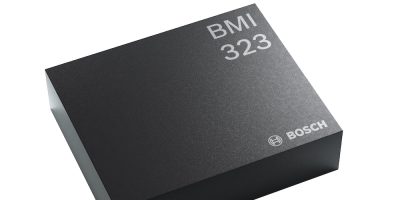Priced for cost-sensitive consumer applications, the cost-effective BMI323 motion sensor inertial measurement unit (IMU) has been announced by Bosch Sensortec. It is designed with integrated features for a shorter development time.
The BMI323 is suitable for standard consumer products, such as toys, gaming controllers, remote controls, wearables, fitness trackers, smart watches, tablets and laptops.
The general-purpose, low power IMU combines acceleration and angular rate (gyroscopic) measurement with intelligent features that are triggered by motion. These make development faster and easier for OEMs, claimed Bosch Sensortec. For example, the BMI323 already includes Bosch Sensortec’s step counter software, so customers do not need to spend time developing their own algorithms. Other features include motion detection that can turn sub-systems on or off when a device, such as a TV remote control, is put down or picked up, to reduce overall power consumption.
Bosch Sensortec has improved accelerometer performance compared to the earlier BMI160 IMU and has also lowered power consumption. In high-performance mode, using both the gyroscope and the accelerometer, the BMI323 has a current consumption of 790 microA compared to 925 microA on the BMI160. This represents a reduction of nearly 15 per cent.
The six-axis BMI323 has a self-calibrating 16-bit triaxial gyroscope, a 16-bit triaxial accelerometer, and a 16-bit digital temperature sensor housed in a miniature 2.5 x 3.0 x 0.83mm3 (14-pin) LGA package. This is pin to pin compatible with the BMI160.
The BMI323 is the first IMU device announced by Bosch Sensortec to include the new I3C interface, in addition to the SPI and I2C interfaces.
The IMU is available now.







